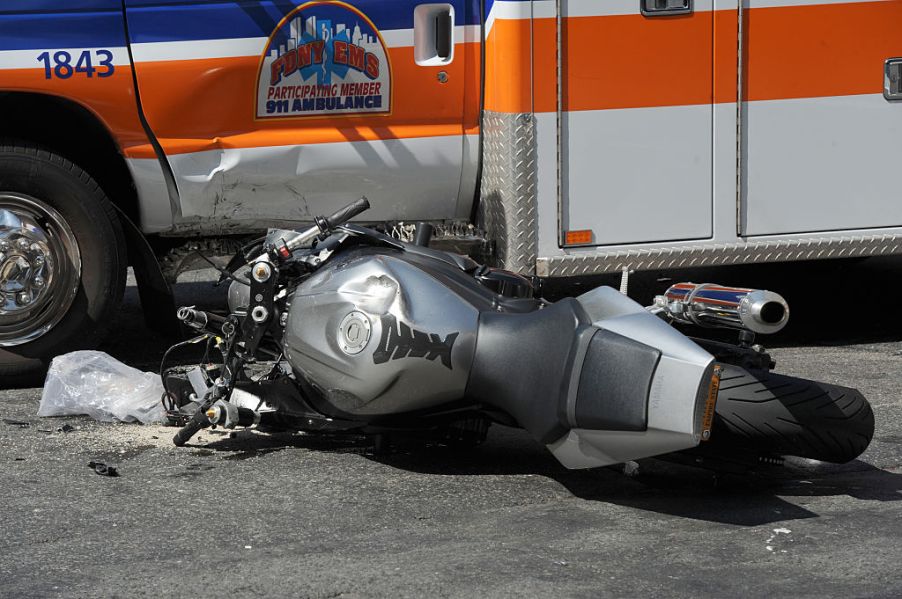
What to Do if You Crash Your Motorcycle
Something nobody likes to think about: crashing your motorcycle. Whether or not the accident was your fault, there are steps you need to take afterward in order to make sure all your bases are covered. Follow these steps to make sure any damage is covered by your insurance company or the insurance company of the other party involved, if they were at fault. Know what you’ll need to do ahead of time, to ensure you don’t miss anything important in the event a crash happens.
Following a motorcycle crash, keep a level head
After a crash, it can be easy to get heated in the moment and lose your sense of control. As long as you’re okay and don’t have any injuries, take a moment to take a few deep breaths to calm down and remain focused on the task at hand.
Check on anyone else who was involved and make sure they are okay, too. Call the authorities right away so a police report can be filed. While you’re waiting for them to arrive, collect the contact information of the other parties involved and take pictures of the crash scene before anything is moved. Document everything, because the scene will be different once you leave.
It may be helpful to talk to any witnesses that saw the crash happen, if you’re not sure how it started. On a motorcycle, you may not always see what’s going on behind you, so talk to people to get an idea of what caused the crash if you’re unsure. The authorities will do the same, but this way you won’t have to wait for the police report to figure things out.
Contact your insurance company once you have an understanding of what happened and provide them with all your documentation. Never admit fault to anyone, since you can’t be 100% sure what exactly happened.
Preventative measures can go a long way
A motorcycle can easily result in much more serious injuries than a car if you were to crash. Always make sure you’re wearing proper safety gear every time you get on your bike. A helmet, jacket, and sturdy boots are a good start, but adding eye protection, gloves, and riding pants are all even better ideas. It’s always better to be too protected than not enough!
Make sure your bike is in good condition each time you go for a ride. Perform routine maintenance regularly, as the slightest thing wrong could send you into a tailspin and out of control. Ensure you’re following the rules of the road – don’t tailgate, don’t weave in and out of traffic, and don’t ride on the shoulder of the road. Bikers get a lot of heat for toeing the line on driving laws, so be sure to ride safely to avoid being the cause of a crash.
Follow up with your insurance company afterward
It’s a good idea to maintain a line of communication with your insurance company following a crash. Be in contact with your agent so you can stay up to date on where things are at, especially since it can sometimes take a while to receive crash reports and determine fault. Get your bike assessed for damage right away to make sure you know how much the repairs will cost and how long it will take to fix.
It’s never fun to think about crashing on your bike, but you’ll ride easier if you’re confident in knowing what to do following an accident. Remain calm, be open with your communication, and cross your fingers that you’ll never need this information again!


